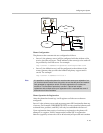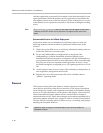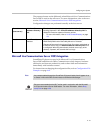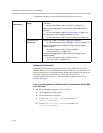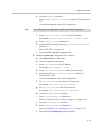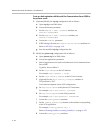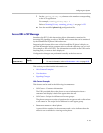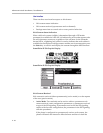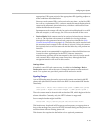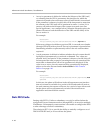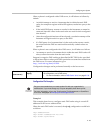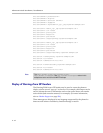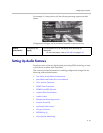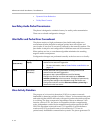
Configuring Your System
4 - 67
appropriate URL upon arrival of the appropriate SIP signaling, subject to
some conditions described below.
Since new web content URLs can be received at any time—as the first URL
for a call or a replacement URL—rules are needed to match displayed web
content with automatic phone behaviour, which are valid actions from
within the Microbrowser context.
Spontaneous web content will only be retrieved and displayed for a call if
that call occupies, or will occupy, the UI focus at the time of the event.
• Passive Mode. Web content can also be retrieved when the user chooses
to do so. The fact that web content is available for viewing is shown
through the call appearance-based web content icon descibed in Web
Content Status Indication on page 4-66. The Select key can be used to fetch
the associated web content for the call that is in focus. If the web content
has expired, the icon will be removed and the Select key will perform no
function.
Passive mode is recommended for applications where the Microbrowser
is used for other applications. In the SIP 2.2 feature, interactive
microbrowser sessions will be interrupted by the arrival of active-mode
web content URLs, which may cause annoyance, although the Back
navigation function will work in this context.
Settings Menu
If enabled, a new SIP web content entry is added to the Setting > Basic >
Preferences menu to allow the user to change the current content retrieval
mode. Two options are provided: passive mode and active mode.
Signaling Changes
A new SIP header must be used to report web content associated with SIP
phone calls (the SSAWC header follow the BNF for the standard SIP header
Alert-Info):
Alert-Info = "Alert-Info" HCOLON alert-param *(COMMA alert-param)
alert-param = LAQUOT absoluteURI RAQUOT *( SEMI generic-param )
The web content must be located with an absolute URI, which begins with the
scheme identifier. Currently only the HTTP scheme is supported.
So an example header might look like:
Access-URL: <http://server.polycom.com/content23456.xhtml>
This header may be placed in SIP requests and responses, as appropriate so
long as the messages are part of an INVITE-initiated dialog and the phone can
associate them with an existing phone call.
This feature also requires the definition of two optional parameters:



